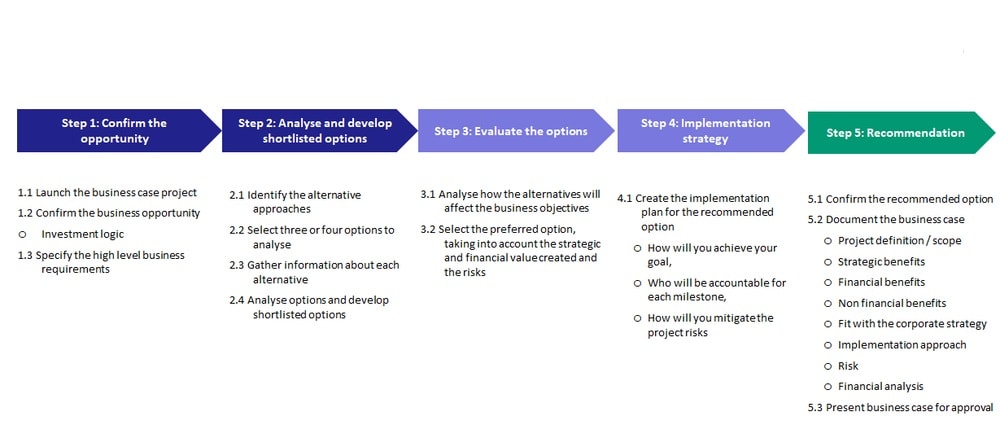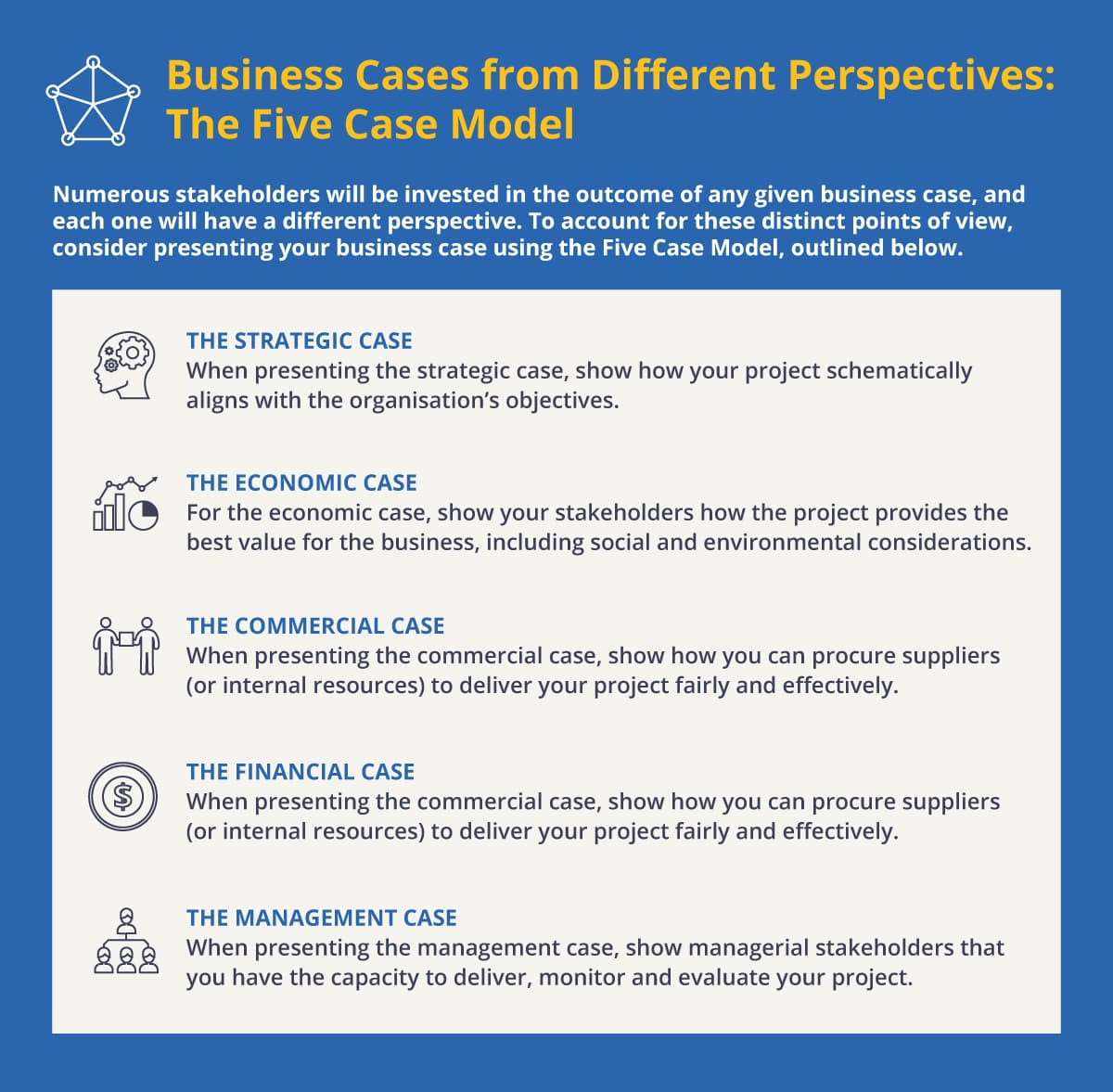Introduction to Business Cases

A business case is a crucial document that outlines the justification and potential benefits of a proposed project or investment. It serves as a comprehensive analysis that helps decision-makers assess the viability and potential success of the endeavor. A strong business case provides factual data and persuasive arguments to support its claims and convince stakeholders to invest resources. It demonstrates the alignment between the project objectives and the organization’s overall goals and strategies. By presenting a compelling business case, companies can secure support and resources needed for successful project implementation.
The importance of a strong business case

A strong business case holds significant importance in securing support and resources for a proposed project or investment. It provides decision-makers with factual data and persuasive arguments to assess the feasibility and potential success of the endeavor. By clearly outlining the benefits, objectives, and financial projections, a well-developed business case demonstrates the alignment between the project and the organization’s goals. It helps people make good decisions and makes sure that resources go to projects with the best potential for profit. A compelling business case increases the chances of obtaining the necessary approvals and resources for successful project implementation.
Key elements to include in a business case

When creating a business case, it’s important to include key elements that give a complete overview of the proposed project or investment. These elements include:
- Executive Summary: A concise summary of the business case, highlighting its key points and objectives.
- Market Analysis: An in-depth analysis of market trends, target audience, and competition to demonstrate the potential demand and viability of the project.
- Financial Projections: Forecasting the costs, revenues, and potential return on investment (ROI) to assess the financial feasibility and profitability.
- Implementation Strategy: Detailing the plan for executing the project, including timelines, resources required, and potential risks.
- Conclusion: A recap of the main points, emphasizing the significance of the business case and its alignment with organizational goals.
A business case includes key elements that help decision-makers evaluate the potential success and merits of a proposed project. It ensures that the business case is well-rounded and factors in the market dynamics, financial considerations, and implementation strategy for a comprehensive assessment.
Executive Summary
The Executive Summary is a concise overview of the key points and objectives of the business case. It serves as a summary of the entire document, providing decision-makers with a clear understanding of the proposed project. In the Executive Summary, the main benefits and objectives of the business case are outlined, emphasizing how the project aligns with the organization’s goals. Presenting information clearly and compellingly is important. It helps to highlight the potential value and impact of the project. By capturing the attention of stakeholders, the Executive Summary sets the stage for a thorough evaluation of the business case.
Summarizing the main points of the business case

The Executive Summary serves as a concise summary of the key points and objectives of the business case. It provides decision-makers with a clear understanding of the proposed project by outlining the main benefits and objectives. The Executive Summary is important for getting stakeholders’ attention and preparing for a detailed evaluation of the business case. It is essential to present the information in a clear and compelling manner, emphasizing the potential value and impact of the project. A well-crafted Executive Summary is crucial for presenting a winning business case.
Outlining the benefits and objectives
The Executive Summary should clearly outline the benefits and objectives of the proposed project. This section should highlight the positive impact that the project will have on the organization, such as increased efficiency, cost savings, revenue growth, or improved customer satisfaction. It is important to provide specific and quantifiable goals that the project aims to achieve. By clearly outlining the benefits and objectives, decision-makers can easily understand the potential value of the project and how it aligns with the organization’s strategic goals. This will help in garnering support and approval for the business case.
Market Analysis

Market Analysis is a crucial component of a winning business case. It involves researching and understanding market trends and dynamics to determine the viability and potential success of the proposed project. This includes identifying the target audience and competition, analyzing consumer needs and preferences, and assessing potential market demand. By conducting a thorough market analysis, decision-makers can make informed decisions about the project’s feasibility and adjust strategies accordingly. This section should include data and statistics to support the market analysis findings and show a clear understanding of the industry.
Understanding market trends and dynamics
Understanding market trends and dynamics is a crucial component of a winning business case. Decision-makers need to understand the market to evaluate if the proposed project will be successful. This involves researching and analyzing factors such as consumer behavior, industry trends, technological advancements, and economic conditions that could impact the market. Businesses can adapt to the market demands by understanding these trends and dynamics. Furthermore, understanding competitors’ strategies and market positioning can help identify gaps and opportunities for differentiation and growth. Thorough market analysis helps decision-makers make informed choices and create strategies that match the market’s needs and preferences.
Identifying target audience and competition

Identifying the target audience and understanding the competition are crucial steps in developing a winning business case. Identifying the target audience helps decision-makers customize their offerings and strategies to meet customer needs and preferences. This involves analyzing market research and demographic data to gain insights into consumer behavior and preferences. Additionally, understanding the competition allows businesses to assess their competitive advantage and identify potential gaps in the market. Analyzing competitors’ strategies, market position, and products helps businesses develop strategies to stand out and gain more market share. Include this information in the business case to show a clear understanding of the market and competition.
Financial Projections

Financial Projections: Forecasting costs, revenues, and potential ROI is a critical component of a winning business case. Decision-makers need to provide accurate and realistic financial projections to demonstrate the financial viability of their proposed initiatives. This involves estimating the costs of implementation, including expenses such as marketing, production, and staffing. It’s important to project revenues to understand the potential return on investment and the financial benefits of an initiative. Analyzing financial risks and opportunities, such as assessing potential cost savings and revenue growth, helps decision-makers make informed decisions and convince stakeholders of the business case’s financial feasibility. Accurate financial projections provide credibility and showcase the potential financial benefits of implementing the proposed initiative.
Forecasting costs, revenues, and potential ROI

Forecasting costs, revenues, and potential return on investment (ROI) is a crucial aspect of a winning business case. Decision-makers must provide accurate and realistic financial projections to showcase the financial viability of their proposed initiatives. This involves estimating implementation costs, including expenses like marketing, production, and staffing. Additionally, projecting revenues is essential for determining the potential ROI and understanding the financial benefits the initiative could bring. Analyzing financial risks and opportunities, such as assessing cost savings and revenue growth, helps decision-makers make informed choices and convince stakeholders of the business case’s financial feasibility. Accurate financial projections provide credibility and highlight the potential financial benefits of implementing the proposed initiative.
Analyzing financial risks and opportunities
Analyzing financial risks and opportunities is a crucial step in the development of a business case. Decision-makers must thoroughly evaluate the potential risks that could impact the financial success of the proposed initiative. This includes assessing factors such as market fluctuations, changes in consumer behavior, and competitive threats. By identifying these risks, decision-makers can develop strategies to mitigate their impact and increase the chances of financial success. Additionally, it is essential to identify potential opportunities that could enhance the financial outcomes of the initiative. This includes identifying potential cost savings, revenue growth opportunities, and strategic partnerships that could bring additional financial benefits. Analyzing risks and opportunities helps decision-makers make informed choices and strengthen their business’s financial viability.
Implementation Strategy
The implementation strategy is a critical component of a winning business case. It outlines the plan for executing the proposed initiative, ensuring that it is carried out efficiently and effectively. This section should detail the specific tasks, milestones, and timelines involved in the implementation process. It is important to assign roles and responsibilities to individuals or teams to ensure accountability and smooth workflow. The implementation plan should also consider potential challenges and risks, and include plans to address them. By carefully developing and articulating the implementation strategy, decision-makers can demonstrate the feasibility and potential success of their business case.
Detailing the plan for executing the business case
Detailing the plan for executing the business case is a crucial component of a winning strategy. Outline the tasks and milestones required to realize the proposed initiative. It is important to establish a clear timeline for implementation and allocate resources accordingly. Additionally, assigning roles and responsibilities to individuals or teams ensures accountability and smooth workflow. The implementation strategy should also plan for any possible challenges or risks and have backup plans or strategies to deal with them. By carefully developing and articulating the implementation plan, decision-makers can demonstrate the feasibility and potential success of their business case.
Assigning roles and responsibilities

When creating a plan for a business case, it’s important to assign roles and responsibilities to ensure accountability and efficient execution. This involves identifying the specific tasks and activities required to implement the proposed initiative and assigning them to individuals or teams within the organization. By clearly defining who is responsible for each task, it becomes easier to track progress and address any potential bottlenecks. Assigning roles and responsibilities helps team members coordinate and collaborate effectively, making sure everyone knows what they need to do in the implementation process. This helps to streamline workflow and maximize productivity.
Conclusion
In conclusion, a well-developed business case is essential for the success of any initiative. By including the key components discussed, such as the executive summary, market analysis, financial projections, and implementation strategy, organizations can effectively communicate the value and feasibility of their proposed projects. Assigning roles and responsibilities within the implementation strategy ensures accountability and efficient execution. When presenting the business case, it is important to emphasize the benefits and objectives, and engage stakeholders with well-supported factual data. By following these guidelines, organizations can increase their chances of securing support and resources for their initiatives.
Reinforcing the significance of a well-developed business case
A well-developed business case holds significant importance for any organization. It serves as a strategic tool to showcase the value and feasibility of proposed initiatives. By including key components such as the executive summary, market analysis, financial projections, and implementation strategy, organizations can effectively communicate their objectives and highlight the benefits of their projects. A strong business case also helps stakeholders make informed decisions based on factual data and analysis. Increasing support and resources improves the chance of successfully implementing the initiative and achieving desired results.
Tips for presenting a compelling business case to stakeholders
When presenting a business case to stakeholders, it is important to make a compelling and persuasive argument. Here are some tips to help you effectively present your case:
- Know your audience: Understand the needs, interests, and concerns of your stakeholders to tailor your presentation accordingly.
- Use data and evidence: Support your case with factual data, market research, and financial projections to build credibility and demonstrate the feasibility of your proposal.
- Clearly communicate benefits: Highlight the potential benefits and positive outcomes of your initiative to emphasize its value and relevance.
- Address potential objections: Anticipate and address any potential objections or risks that stakeholders may have, providing mitigation strategies or alternative solutions.
- Use visuals and storytelling: Utilize visual aids, charts, and graphs to present information in an engaging and easy-to-understand manner. Incorporate real-life examples and stories to make the case more relatable and memorable.
Remember, a compelling business case is not just about the content, but also about the way it is presented. Practice your presentation skills and be confident while articulating your proposal to win over your stakeholders.




